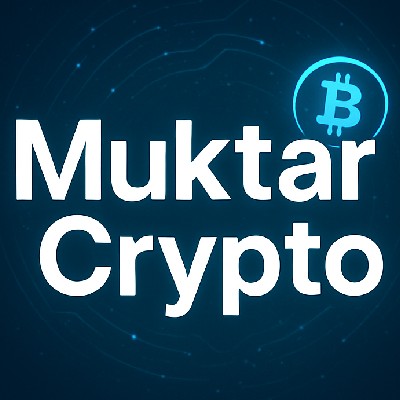
The Core Vision of $INIT Protocol
The $INIT Protocol is grounded in a bold vision: to initiate a new era of decentralized digital empowerment, where individuals have the tools, ownership, and freedom to build, participate, and thrive in a trustless, transparent ecosystem. It aims to serve as the ignition point for the next wave of Web3 innovation.
1. Onboarding the Next Generation of Builders
At its core, $INIT is about lowering the barrier to entry into blockchain development and decentralized applications. Whether you're a coder, creator, or contributor, the protocol provides infrastructure, grants, and toolkits to help you bring your ideas to life without heavy technical constraints.
2. Powering a Modular, Scalable Ecosystem
$INIT is designed as a foundational layer—a protocol that enables seamless modularity and scalability. It allows developers to integrate features such as identity, payments, smart contract logic, and governance with minimal friction, making the ecosystem highly adaptable and future-proof.
3. Championing Decentralized Governance
A key tenet of the $INIT Protocol is its DAO-first framework, where decision-making is in the hands of the community. Token holders participate in shaping protocol upgrades, funding initiatives, and steering the platform’s evolution, ensuring that the ecosystem remains democratic and aligned with user interests.
4. Real Utility, Real Value
Unlike hype-driven tokens, $INIT is anchored in real-world utility. It powers staking, grants access to premium developer tools, fuels platform fees, and rewards ecosystem contributions. Its integration across various dApps ensures growing demand as the platform scales.
5. Secure, Transparent, and Open-Source
Security, transparency, and openness form the ethical backbone of $INIT. All protocol components are open-source, audited, and community-reviewed, fostering trust and collaboration. By building in the open, $INIT invites global contributors to co-create its future.
6. Fostering Inclusive Innovation
$INIT envisions a world where innovation is inclusive, borderless, and community-powered. Through global education initiatives, incentivized learning, and builder support programs, it empowers underrepresented voices and emerging regions to take part in Web3’s growth.
---
In Essence:
The $INIT Protocol isn’t just a platform—it’s a movement to initiate change, enable ownership, and build a better decentralized future. It empowers everyone—from developers to everyday users—to become active participants in shaping the digital economy.
Market Playbook: Trading MemeFi, Bitcoin, and Ethereum
As of May 1, 2025, key crypto assets are carving out distinct technical footprints and strategic inflection points. Below is a detailed, actionable update on MemeFi, Bitcoin (BTC), and Ethereum (ETH), complete with current price levels, key support and resistance zones, and tailored trading strategies.
1. MemeFi: Community-Driven Growth Continues
Exchange Momentum
- MemeFi’s MEMEFI/USDT pair on Bitget remains highly liquid, underpinned by ongoing community incentives and a loyal user base.
Ecosystem Expansion
- Beyond its gamified roots, MemeFi now spans multiple chains, offers yield-bearing positions via lending integrations, and is poised to launch NFT drops and memecoin battles.
Technical Levels & Strategy
Current Price: ~0.0042
Near-Term Support: 0.0038–0.0039 (recent consolidation low)
Near-Term Resistance: 0.0046–0.0048 (prior swing highs)
Trading Plan
- Accumulator: Buy in tranches on dips toward 0.0038, targeting a 15–20% gain into the 0.0046 zone.
- Momentum Breakout: On daily close above 0.0048, add to positions with targets near 0.0052–0.0055.
- Risk Control: Place stop-loss orders ~8% below entry, around 0.0035, to guard against sharp pullbacks.
2. Bitcoin (BTC): Navigating Pre-Halving Dynamics
With the next halving slated for April 2028, Bitcoin is in a strategic consolidation phase. Here’s how to trade the 97,141 price environment.
Major Resistance: 100,000–102,000 (psychological ceiling; large sell orders)
Near-Term Resistance: 98,500–99,500 (recent swing highs)
Near-Term Support: 95,000–96,000 (short-term demand cluster)
Major Support: 90,000–91,500 (long-term accumulation; strong buy zone)
Trading Strategies
Range Bound Play
- Entry: Near 95,500–96,000 support.
- Target: Scale out into 98,500–99,500 resistance.
- Stop-Loss: Below 94,500.
Breakout Campaign
- Trigger: Daily close above 99,500.
- Entry: On breakout retest at ~99,500.
- Target: 102,000–104,000; trail stops on remaining position.
- Stop-Loss: Below 98,000 invalidates breakout.
Bear-Trap Pullback
- Trigger: Intraday dip into 94,000–95,000 that quickly reverses.
- Entry: On confirmation of support hold (bullish engulfing candle).
- Target: 98,000–99,000.
- Stop-Loss: Below 93,500.
3. Ethereum (ETH): PoS Stability Meets Layer-2 Momentum
Ethereum’s staking model and Layer-2 rollups continue to shape its price action around 1,862.47.
Major Resistance: 1,950–2,000 (supply wall; option expiries)
Near-Term Resistance: 1,900–1,920 (recent swing highs)
Near-Term Support: 1,800–1,820 (on-chain demand zone; L2 activity support)
Major Support: 1,700–1,750 (long-term accumulation; key floor)
Trading Strategies
Staking Yield Base
- Position: Accumulate near 1,800–1,820 while earning 4–5% APY in staking.
- Adjust: Redeploy staking rewards on rallies into the 1,900 zone.
Layer-2 Adoption Trade
- Entry: Buy on pullbacks toward 1,800 that coincide with rising Layer-2 TVL.
- Targets: 1,920 and 1,960 based on L2 throughput milestones.
- Stops: Below 1,790.
Volatility Breakout
- Trigger: Close above 1,920 or below 1,800 on increased volume.
- Targets: 2,000 on upside; 1,750 on downside.
- Stops: 3–5% beyond trigger level.
4. Portfolio Allocation & Risk Framework
Core Allocation: 50–60% in BTC & ETH for stability and institutional flows.
Growth Allocation: 10–20% in high-beta assets like MemeFi for asymmetric upside.
Risk Discipline
- Scale In/Out: Add on confirmed signals; trim into strength.
- Stops & Alerts: Automate exits around support/resistance flips.
- On-Chain Cues: Monitor whale wallet behavior, staking rates, and Layer-2 TVL for confirmation.
By coupling precise technical levels with each asset’s unique narrative—pre-halving dynamics for Bitcoin, PoS & Layer-2 expansion for Ethereum, and community-driven growth for MemeFi—traders can structure positions that balance upside potential with disciplined risk management.

$INIT :Interwoven Rollups are arguably the core innovation of Initia, and they’re changing how modular blockchains can scale while staying connected.
What Are Interwoven Rollups?
Interwoven Rollups are application-specific L2s (called Minitias) that operate independently but are natively connected through:
IBC (Inter-Blockchain Communication) for secure messaging,
Shared security from the Initia Layer 1,
And common infrastructure for liquidity, identity, and governance.
Unlike isolated rollups on Ethereum, Minitias don’t need third-party bridges to interact — they’re woven into the Initia L1 and into each other.
How They Work Together
Imagine this like a fabric of mini blockchains:
Each rollup: Handles a specific function (like gaming, DeFi, or social media).
The L1 (Initia): Acts like the fabric that weaves them all together — managing communication, staking, and cross-chain settlement.
Example Use Case:
Let’s say you build:
A gaming rollup with free user transactions and NFT logic.
A DeFi rollup with high-throughput DEX trading.
Thanks to interwoven rollups:
A player could earn an NFT in the game rollup…
…then instantly sell it in the DeFi rollup’s marketplace,
Without bridges, wrapped assets, or excessive gas costs.
Key Benefits
1. Native Interoperability:
Apps on different Minitias talk directly using IBC, not external bridges (which are often insecure).
2. Composability Across Chains:
Developers can compose dApps across multiple Minitias — e.g., one app could read state or settle trades on another chain in real-time.
3. Shared Liquidity Layer:
Initia L1 hosts InitiaDEX and enshrined liquidity, enabling fast access to pooled assets for any Minitia app.
4. Simplified User Experience:
Users don't need to worry about moving assets between chains — the cross-rollup layer handles it seamlessly under the hood.
This makes Initia’s model closer to the "Internet of Blockchains" vision that Cosmos and Polkadot proposed — but with much tighter integration and developer control.



 最低価格
最低価格 最高価格
最高価格 
























.png)









![Giftedhands [Old]](https://img.bgstatic.com/multiLang/coinPriceLogo/e070d317cb2c472f68ff9c08fc2583561710435803801.png)



cVault.financeのソーシャルデータ
直近24時間では、cVault.financeのソーシャルメディアセンチメントスコアは3で、cVault.financeの価格トレンドに対するソーシャルメディアセンチメントは強気でした。全体的なcVault.financeのソーシャルメディアスコアは10,024で、全暗号資産の中で218にランクされました。
LunarCrushによると、過去24時間で、暗号資産は合計1,058,120回ソーシャルメディア上で言及され、cVault.financeは0.01%の頻度比率で言及され、全暗号資産の中で177にランクされました。
過去24時間で、合計492人のユニークユーザーがcVault.financeについて議論し、cVault.financeの言及は合計151件です。しかし、前の24時間と比較すると、ユニークユーザー数は増加で1%、言及総数は増加で57%増加しています。
X(Twitter)では、過去24時間に合計1件のcVault.financeに言及したポストがありました。その中で、0%はcVault.financeに強気、0%はcVault.financeに弱気、100%はcVault.financeに中立です。
Redditでは、過去24時間にcVault.financeに言及した0件の投稿がありました。直近の24時間と比較して、cVault.financeの言及数が100%減少しました。
すべてのソーシャル概要
3